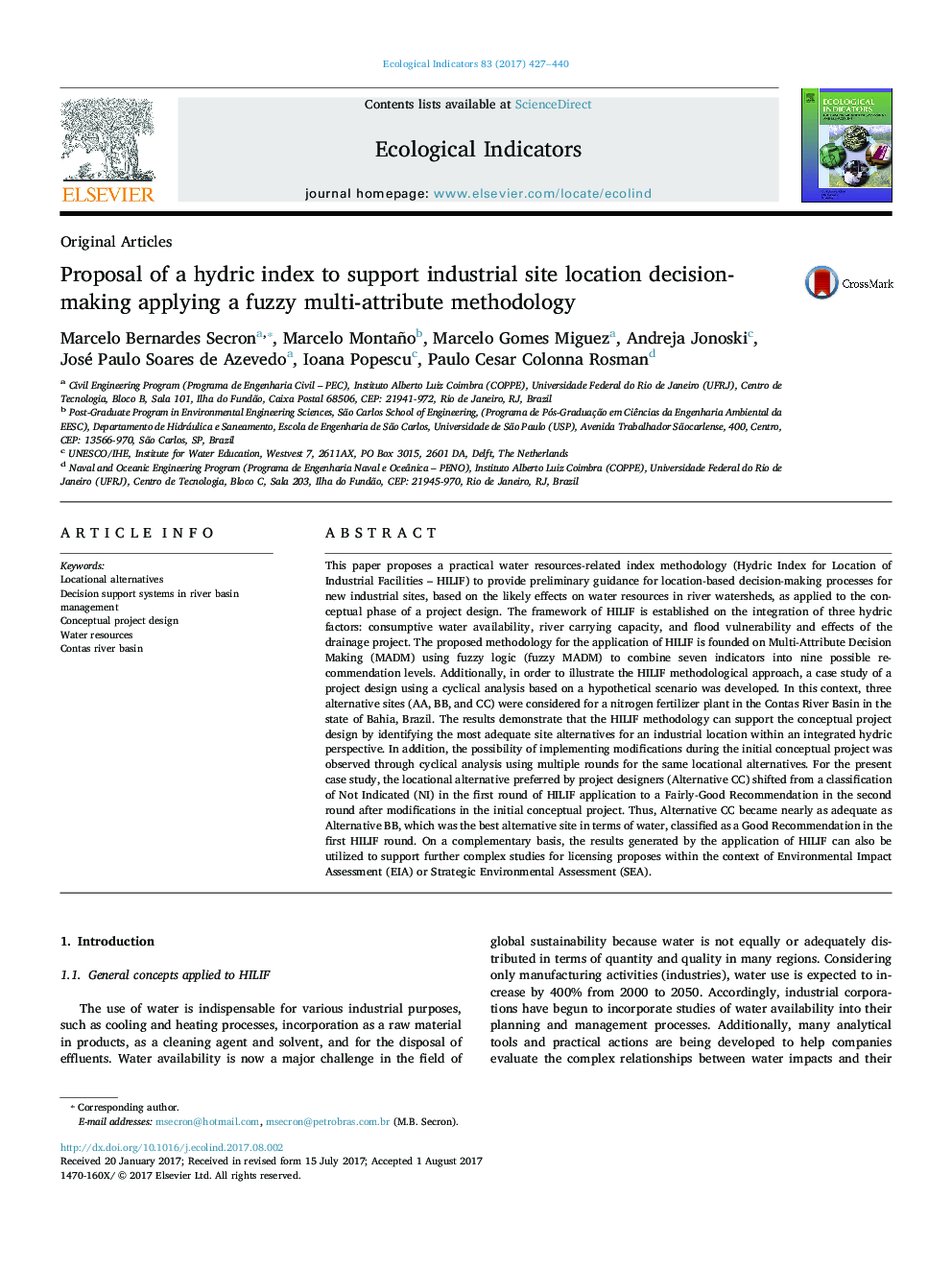| Article ID | Journal | Published Year | Pages | File Type |
|---|---|---|---|---|
| 5741512 | Ecological Indicators | 2017 | 14 Pages |
â¢Potential impacts on water resources can be measured by our proposed index (HILIF).â¢HILIF supports analysis of industrial location alternatives applied to conceptual projects.â¢Decision makers can be informed about water resources constraints by HILIF use.â¢Water aspects of an industrial facility project can be tested by applying HILIF.â¢HILIF results can also be applied to support EIA or SEA.
This paper proposes a practical water resources-related index methodology (Hydric Index for Location of Industrial Facilities - HILIF) to provide preliminary guidance for location-based decision-making processes for new industrial sites, based on the likely effects on water resources in river watersheds, as applied to the conceptual phase of a project design. The framework of HILIF is established on the integration of three hydric factors: consumptive water availability, river carrying capacity, and flood vulnerability and effects of the drainage project. The proposed methodology for the application of HILIF is founded on Multi-Attribute Decision Making (MADM) using fuzzy logic (fuzzy MADM) to combine seven indicators into nine possible recommendation levels. Additionally, in order to illustrate the HILIF methodological approach, a case study of a project design using a cyclical analysis based on a hypothetical scenario was developed. In this context, three alternative sites (AA, BB, and CC) were considered for a nitrogen fertilizer plant in the Contas River Basin in the state of Bahia, Brazil. The results demonstrate that the HILIF methodology can support the conceptual project design by identifying the most adequate site alternatives for an industrial location within an integrated hydric perspective. In addition, the possibility of implementing modifications during the initial conceptual project was observed through cyclical analysis using multiple rounds for the same locational alternatives. For the present case study, the locational alternative preferred by project designers (Alternative CC) shifted from a classification of Not Indicated (NI) in the first round of HILIF application to a Fairly-Good Recommendation in the second round after modifications in the initial conceptual project. Thus, Alternative CC became nearly as adequate as Alternative BB, which was the best alternative site in terms of water, classified as a Good Recommendation in the first HILIF round. On a complementary basis, the results generated by the application of HILIF can also be utilized to support further complex studies for licensing proposes within the context of Environmental Impact Assessment (EIA) or Strategic Environmental Assessment (SEA).
